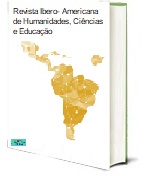THE USE OF CONCRETE MATERIALS FOR TEACHING THE DECIMAL NUMBERING SYSTEM AND THE FOUR BASIC OPERATIONS
DOI:
https://doi.org/10.51891/rease.v8i7.6178Keywords:
Mathematics. Concrete. Learning.Abstract
This article reports that teaching mathematics is always an interesting challenge and the classroom can make this task even more exciting. The proposal to use concrete and manipulative playful resources in a didactic way in the teaching of mathematics is not recent, since Comenius and his Didactica Magna, the use of different resources has been applied in schools around the world. If we take into account the fact that the child is capable of learning by himself and is responsible for his own learning process, the materials become strong allies, as they make sense for being concrete and representations of ideas that allow learning, in the However, the ludic is not worked in any way, the way in which the manipulative materials are worked in the classroom is decisive for them to help students to learn.
Downloads
Downloads
Published
How to Cite
Issue
Section
Categories
License
Atribuição CC BY

